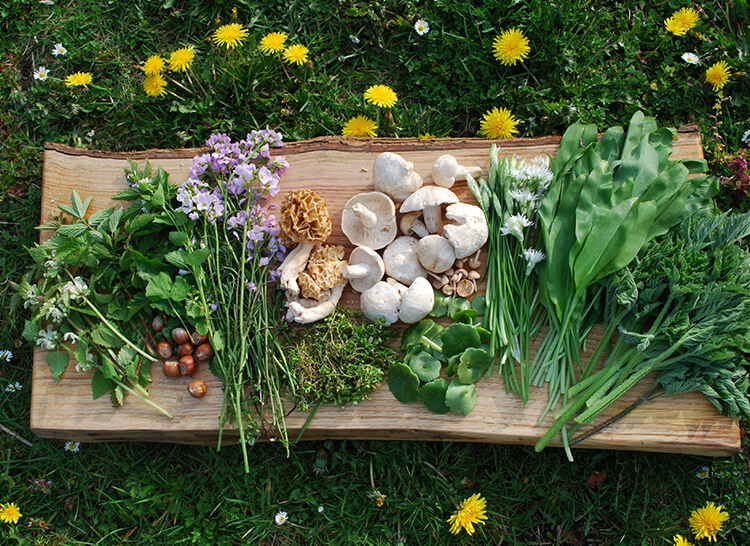Having always been interested in the flora and fauna of the English countryside I jumped at the chance to join the next foraging group being held at Notgrove Estate last week so I could learn a bit more about what was growing all around. Little did I realise just the vast variety of plants that we would find in just a few hedgerows and gardens within the village itself. But you had to know where to look…enter Kerry from Wild Food UK whose career had been built up from twenty years of knowledge of just about every green thing in sight.
Kerry explained that in two generations the British, in particular, have lost the knowledge that our ancestors took for granted, whether looking for food or homemade medicines.
We were then sampling and learning about all sorts of edible leaves, from yarrow to ground elder – apparently perfect in a nice green salad. Beech leaves can form edible wraps, cleavers can be roasted then dried and used as a coffee substitute. Daisy flower buds can be pickled and used instead of capers.
We soon learnt that elderflowers are fertilised by a microscopic fly which only comes out at the end of the day when the tree releases a heady aroma to attract them. That’s the best time to pick the flowers and Kerry’s bubbly elderflower champagne, which was produced out her backpack (one she had made earlier), was good proof of this.
Kerry got excited when she spied an unlikely delight in the form of a tiny onion bulb from the three-cornered leek which looked remarkably like a white bluebell. These tasted like spring onions crossed with a crunchy radish and we were soon all digging these up from the soil with sticks and popping them like candy.
There are also a few things to avoid and Kerry stressed the importance of identifying plants (especially fungi) before eating. One of these is Digitalis or foxglove which although beautiful is highly toxic.
Hogweed is growing in profusion at this time of year and we found out despite the strong smell, how the young shoots make good eating and the dried seeds can be used as an aromatic spice which thankfully doesn’t taste of pig.
Not only was Kerry an exceptional botanist, she could also cook! After two and a half hours of foraging (which passed in a flash) it was time for a late lunch. Out of several wicker picnic baskets was produced a foraged feast of delicious things – a nettle soup, hogweed frittata and then little mint shortbreads spread with elderflower curd for afters.
Our small group had certainly learnt a lot and thank you to Wild Food UK for letting me come along. Their next foraging course runs at Notgrove on Sat 2nd July, booking is on-line.

